Beautiful and graceful, swans are the picture of elegance. Who wouldn’t want such a majestic animal strutting around in their yard or floating in their swimming pool?
Unfortunately, while it’s possible to own a pet swan, there are several things you have to consider before getting yourself one.
First of all, there are some places that prohibit the owning of swans or specific swan species. Secondly, thanks to their size, aggressiveness, need for lots of open space, and other characteristics, swans can make extremely challenging pets.
Would a swan make a great pet for you? Keep reading to find out!
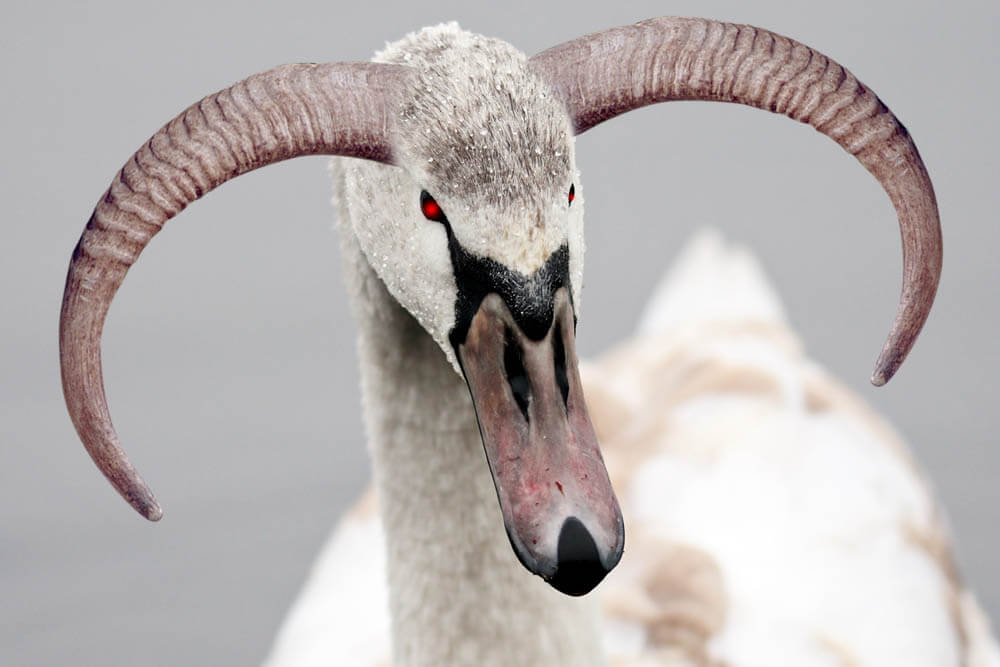
The Legality of Owning Pet Swans
If you live in the U.S., your state will determine whether or not it’s legal to own a swan.
Most owners prefer keeping mute swans, which are legal to keep in the following states:
- Arkansas
- Idaho
- Indiana
- Missouri
- New York
- North Carolina
- North Dakota
- Ohio
- Oregon
- Pennsylvania
- Tennessee
- Texas
- Utah
- Vermont
- Wisconsin
Some of these states require you to obtain a special permit or special documentation before allowing you to keep a pet swan. Others will need the bird to be tagged, sterilized, or pinioned (made incapable of flight). Of course, expect these processes to be demanding, costly, and time-consuming.
You’ll also need special permits to own other types of swans, such as black-necked swans, black swans, coscoroba swans, whoopers, and native species like whistlers and Trumpeters, which the Federal Waterfowl Act protect.
In general, you should research your region’s laws regarding the keeping of pet swans, so try contacting your area’s agriculture and wildlife authority if you’re considering getting yourself a swan.
Lastly, while it’s legal in some places to own swans, it’s illegal to capture them from the wild.
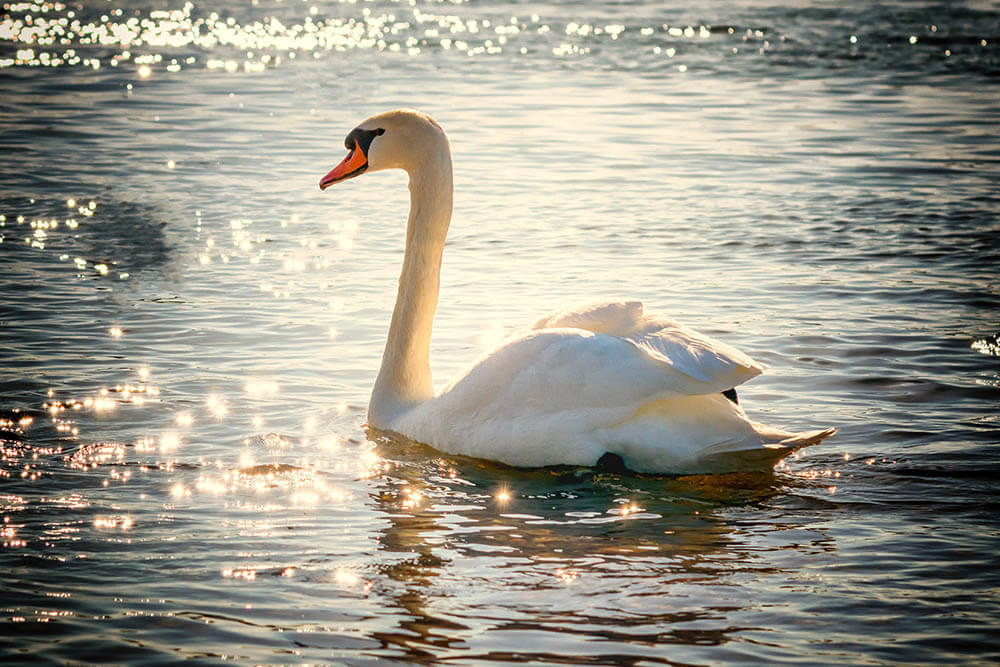
9 Challenges of Owning a Pet Swan
Can you own a pet swan? You can if you live in the right state.
However, the more important question is: should you own a pet swan?
Swans are nothing like dogs or cats. These birds are generally difficult to handle and will test your abilities as a pet owner as well as the limits of your patience. For this reason, swans are a terrible choice for beginners; only those who have lots of experience caring for swans should keep these birds as pets.
With that in mind, we’ve compiled a list of the challenges that keeping a pet swan can present.
1. Swans are wild animals
Unlike dogs and cats, swans aren’t domesticated. While you can train them to a small degree, they remain subject to their primal urges, which means they’ll usually do what they want regardless of your wishes. They’re wild animals, after all – they answer to no one!
It doesn’t matter if you’ve raised a swan to be a beloved family member. If it gets upset with you, it won’t hold back from teaching you a lesson. A pet dog would refrain from biting you, but a swan? Prepare to defend yourself!
You also can’t potty-train swans, so you’ll have no choice but to clean up after them whenever and wherever they make a mess!
2. Swans require a special habitat
As wild animals, swans are used to the wide open spaces of their natural habitats, which include lakes, rivers, ponds, streams, marshes, swamps, and wetlands – environments that give them lots of room to roam, hunt, mate, and raise their young. For a swan to stay happy and healthy, it needs to stay in such habitats, as only these places can meet its unique demands.
In other words, swans don’t enjoy being cooped up in backyards or pens. Forcing them to stay in such cramped spaces will upset them, which will increase the likelihood of them being aggressive toward you. It’ll limit their physical activity, causing a drop in the exercise they need to remain in good health. It may even reduce their appetite, which can harm their health to make them weaker and sicklier.
If you’re going to keep a pet swan, you’ll have to place it in an enclosure that closely replicates its natural habitat. That means building an enormous space with a large body of water as well as the appropriate kind of vegetation. At the same time, you’ll need to wall or fence this space to deter escape and protect them from predators. Constant surveillance can also help keep your feathered friend from getting into any sort of trouble. These measures will only add to the already huge burden of keeping such a bird as a pet, however.
3. Swans are huge
Swans are big birds, with adults standing 4 to 5 feet tall and weighing around 20 to 30 pounds. This is one of the reasons why your pet will need an enormous enclosure to call home, as a house or a backyard is just too small and confining for it to enjoy the freedom it’s used to in the wild.
The swan’s size makes it particularly difficult to handle. If your pet decides it wants to be a jerk, you’ll have a tough time getting it under control. In fact, putting your hands on an aggressive swan can be dangerous (more on this further below).
Its size also means the swan eats a lot of food – between 4 and 6 pounds of edibles daily, which is around a quarter of its body weight. Thus, keeping a swan healthy can get really pricey, quickly.
4. Swans can be violent
Swans are typically quick to anger, so a pet swan won’t hesitate to viciously attack you if you’re the source of its stress.
There are many reasons why swans would display aggression. For one thing, they’re extremely protective of their nests and offspring, so it’s best to stay clear of them during their mating season. Males are particularly cantankerous during this time thanks to their raging hormones and the stress of competing against other males.
Don’t forget that swans are huge birds. While a furious chicken isn’t much of a threat, a swan that’s eager to hurt you is a different story. In fact, there are several cases of swans seriously injuring or killing other swans, pets, and even humans.
When a swan attacks, it uses its rigid beak to peck its target; furiously flaps its enormous, heavy wings to beat said target; and/or rakes at its target’s flesh with its sharp talons. If these methods can cause an adult human significant injury, imagine what they can do to a child or a small pet.
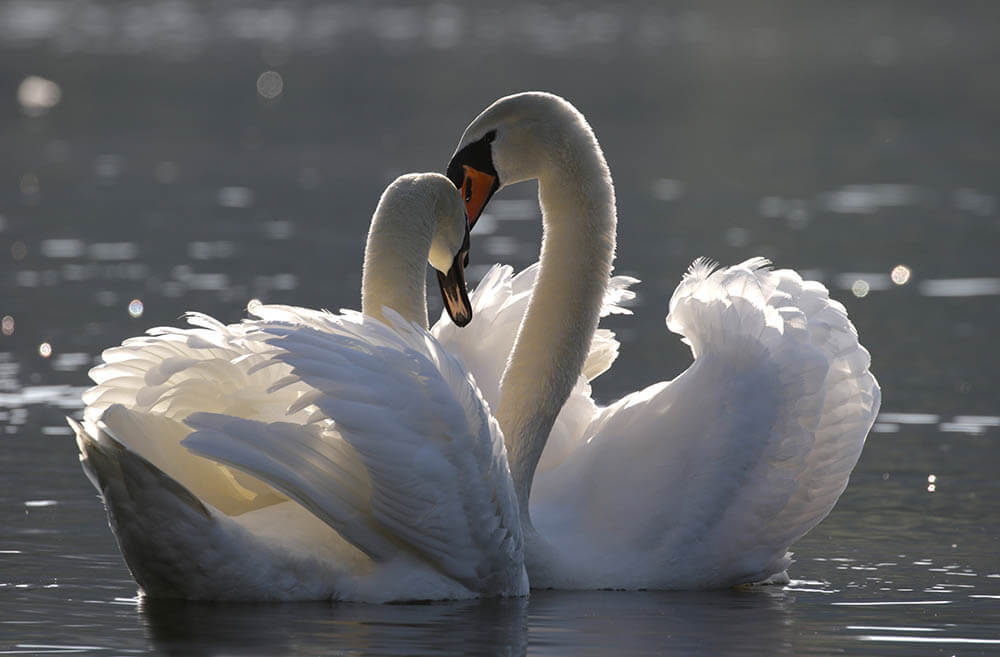
As social animals, swans need to be with others of their kind to be happy. These birds also tend to live in monogamous pairs, with some mating for life.
If a swan in captivity is forced to live in isolation, it can grow lonely, which can lead to unhappiness and therefore aggression. To keep a swan as harmless as possible, it’s best to get another swan to keep it company.
If you get your swan a mate, however, keep in mind that it’ll cost you more. Also, there’s a good chance they’ll eventually have cygnets, which will make costs skyrocket. You can sell or give away those extra swans, of course, but you might have a tough time finding anyone willing to buy or adopt exotic pets – not to mention the process of rehoming these birds will take some work.
You’ll also have to worry about those cygnets attracting predators such as wolves, foxes, and other big birds. This means having to install extra security measures to ensure such predators don’t raid your birds’ enclosure.
6. Swans are expensive to acquire and care for
Acquiring an adult mute swan will cost you dearly – as much as $1,500 to be exact. And as it’s best to have a pair of swans, you can end up shelling out up to $3,000 just to own these exotic pets!
Alternatively, you can purchase swan eggs, which are much cheaper at $50 to $100. Just make sure you obtain them from a reputable private breeder. Also, remember that you’ll need to invest in a hatchery to ensure those eggs hatch and give you healthy cygnets.
Of course, these aren’t the only expenses you’ll have to worry about. As discussed earlier, there’s the cost of feeding your swans daily. You’ll also have to build a special enclosure for them to prevent them from escaping and protect them from predators. You’ll likely have to hire extra manpower to ensure this enclosure is regularly cleaned and kept in good condition, too.
Don’t forget you’ll need to get your birds regularly checked by a vet to ensure they stay in excellent health. Unfortunately, vets specializing in exotic pet care are rare and therefore more expensive than regular vets.
7. Swans can be messy
As previously mentioned, swans can’t be toilet-trained. If you’re squeamish about your pets peeing and pooping wherever they please, these birds aren’t for you.
Swans also leave a mess of torn plant matter behind whenever they’re sourcing surrounding vegetation for food. Expect the same kind of clutter when it’s breeding season, as your swans will be gathering grasses and leaves to build nests for their eggs. It’s bad enough that this kind of mess is an eyesore, but it can also attract snakes, which can put both your birds and their human caretakers in danger.
The fact of the matter is you can’t avoid having a disheveled enclosure when you’re keeping pet swans. Because swans use grass for various purposes – such as a source of food and building materials for nests – it’s not advisable to trim or mow grass. If your neighbors start looking at you funny due to the state of your property, be prepared to either offer them a good explanation or be okay with constant scrutiny.
8. Swans are noisy
Swans may look elegant, but they can make a ruckus worthy of the village miscreant.
Swans trumpet, yap, whistle, growl, snort, snore, hum, and make all sorts of other noises when communicating with each other. They’re loud when they’re eating, preening themselves or each other, proclaiming their territory, announcing their presence to others, feeling threatened, and defending themselves from real or suspected threats.
They’re especially noisy during the mating season, when females use various vocalizations to solicit males, and males make a range of sounds in the process of competing against other males. And of course, you can expect plenty of chatter when a mother is training her young offspring about life. Cygnets themselves are an extremely talkative bunch.
And don’t let the name “mute swan” fool you; these birds are among the noisiest swans you’ll encounter.
If you’re worried about noise pollution or incurring the wrath of your neighbors, pet swans aren’t for you.
9. Swans fly
Swans are flight-capable birds, so unless you want your pet to escape its enclosure, you’ll have to get a professional to clip its wings.
Make sure to do this before the migration season, as swans leave their home to travel thousands of miles to extremely remote places. And if your pet encounters predators along the way or finds somewhere else to call home, you may never see it again.
Don’t clip your swan’s wings yourself, however; as the process can be dangerous to both you and the bird, leave it to an expert.
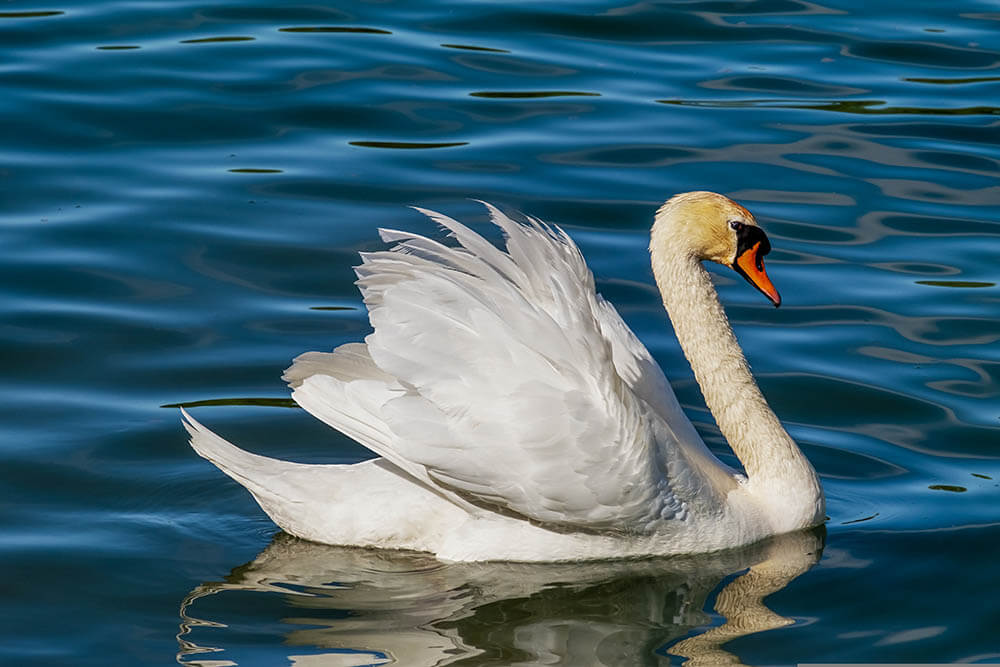
An Alternative to Buying Swans
If you’re adamant about owning your own swan but can’t afford to purchase one, you can instead lure one or more of these birds to your area.
Having swans as visitors instead of pets is ideal for many reasons. For one thing, it will prevent the many expenses associated with possessing your own swans as well as other issues including clipping your pets’ wings and dealing with aggressive birds. More importantly, you won’t be disrupting their lives.
Take note, however, that it’s illegal to capture wild swans, so the swans who come to your area won’t be actual pets but will instead be (hopefully regular) visitors.
Check out our quick guide on how to attract swans to your property:
Build a swan island
What’s a swan island? It’s a raised area surrounded by a body of water that a pair of swans can use as a resting place and nesting ground. The island must be over 50 feet in circumference so that there’s enough space for two adult swans and their cygnets.
You may not even need to build a swan island to attract swans to your place. Sometimes, a nearby pond will do as long as you make sure the water is safe and the surrounding land is populated by their preferred plants.
Provide swans with plenty of food to eat
So let’s say you already have a swan island or pond. What else can you do to ensure swans visit it?
Fill the island or area surrounding the pond with natural grass, twigs, and plants such as pondweed, duckweed, and eelgrass, which are great food sources during the warmer months. When the weather shifts and the supply of such plants dwindle, offer them wheatgrass, cranberries, water plantain, lupine, and tubers such as carrots, instead. Make sure to ask your local authority first if you’re permitted to plant these, however.
Keep the water safe
Swans won’t go anywhere near water that isn’t safe for them to swim in. For this reason, it’s crucial for you to keep the water in the pond or around the swan island as clean as possible for these birds. This is because swans are extremely sensitive to pollution.
Pick up any trash in the water or surrounding land so that it doesn’t become home to dangerous microorganisms or lure disease-carrying insects. Also, you should seek help from professionals who can remove potentially hazardous chemicals from the water.
In addition, keep the area free of predators and hunters. You might need some help with the proper authorities to make this possible, however.
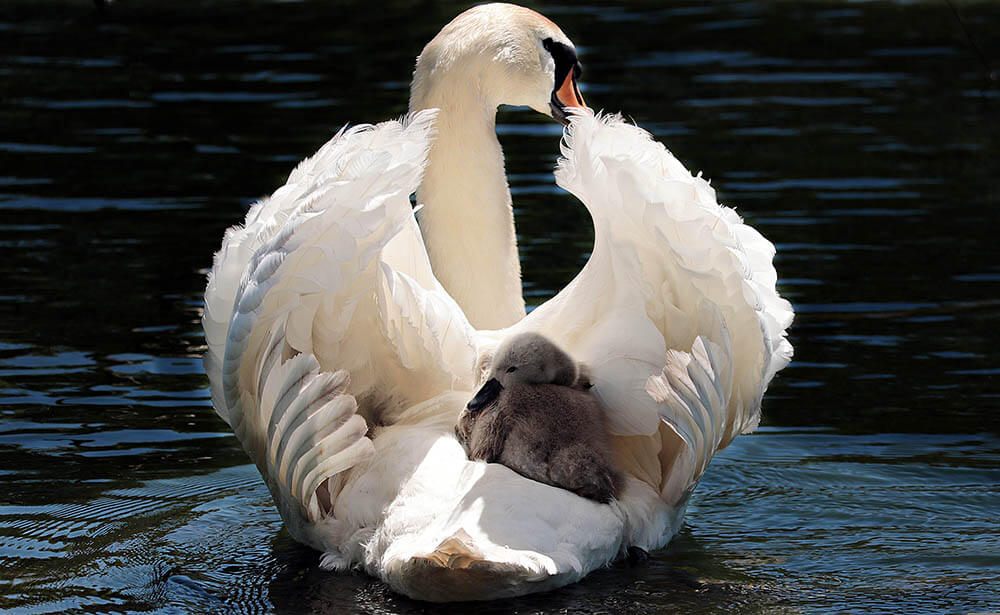
Conclusion
Can you keep a swan as a pet? It depends on where you live. Many U.S. states allow the keeping of pet swans, though you may be required to produce special permits and other types of documentation.
Don’t forget that owning your own swan can also present a slew of challenges that you won’t be ready for if you aren’t accustomed to caring for exotic pets. Swans are large, undomesticated birds that are prone to aggression. They require a special habitat to survive and thrive and don’t do well isolated from others of their kind. They’re also noisy, messy, and expensive to care for. And if you don’t want your beloved pet flying away, you’ll need to have its wings clipped.
A good alternative to purchasing a pet swan is to attract swans to your area. To do this, you’ll need to build a swan island populated by their favorite plants. It’s also a good idea to keep the water and surrounding land free of predators, hunters, and pollution.
Still want a pet swan? Make sure you’re ready to meet the challenges of owning one!
